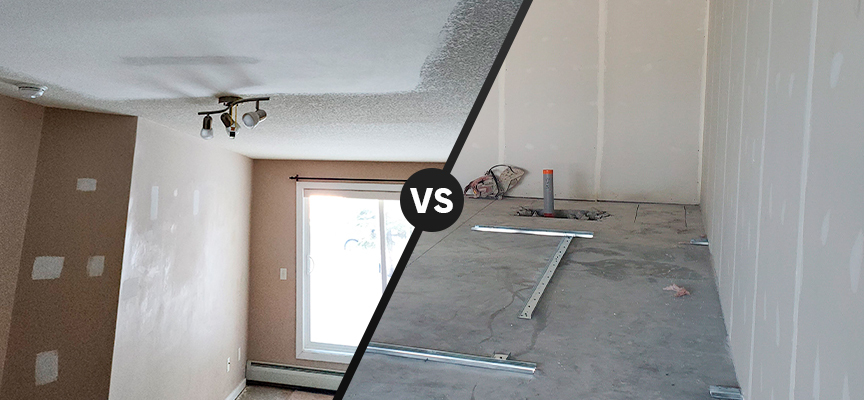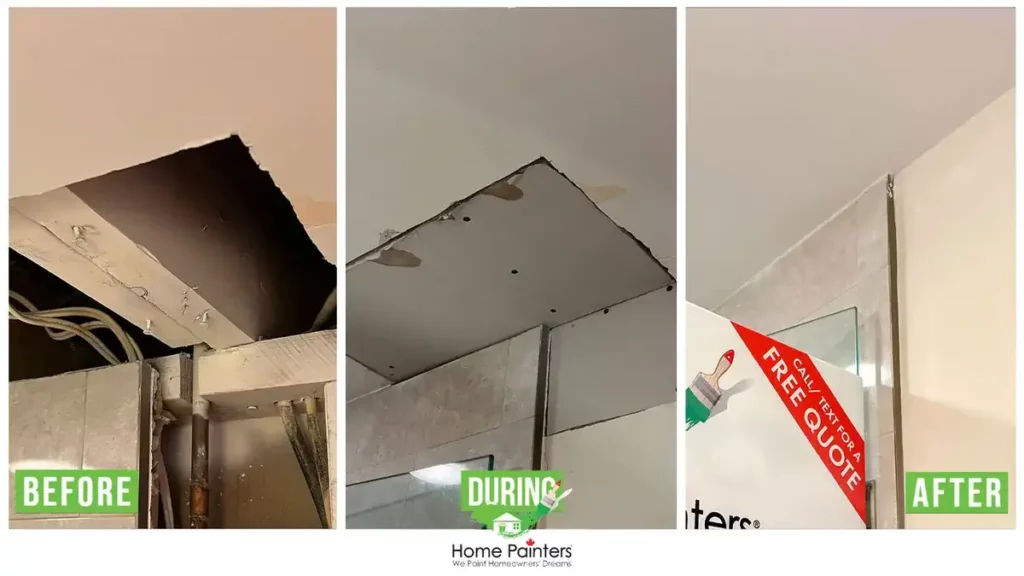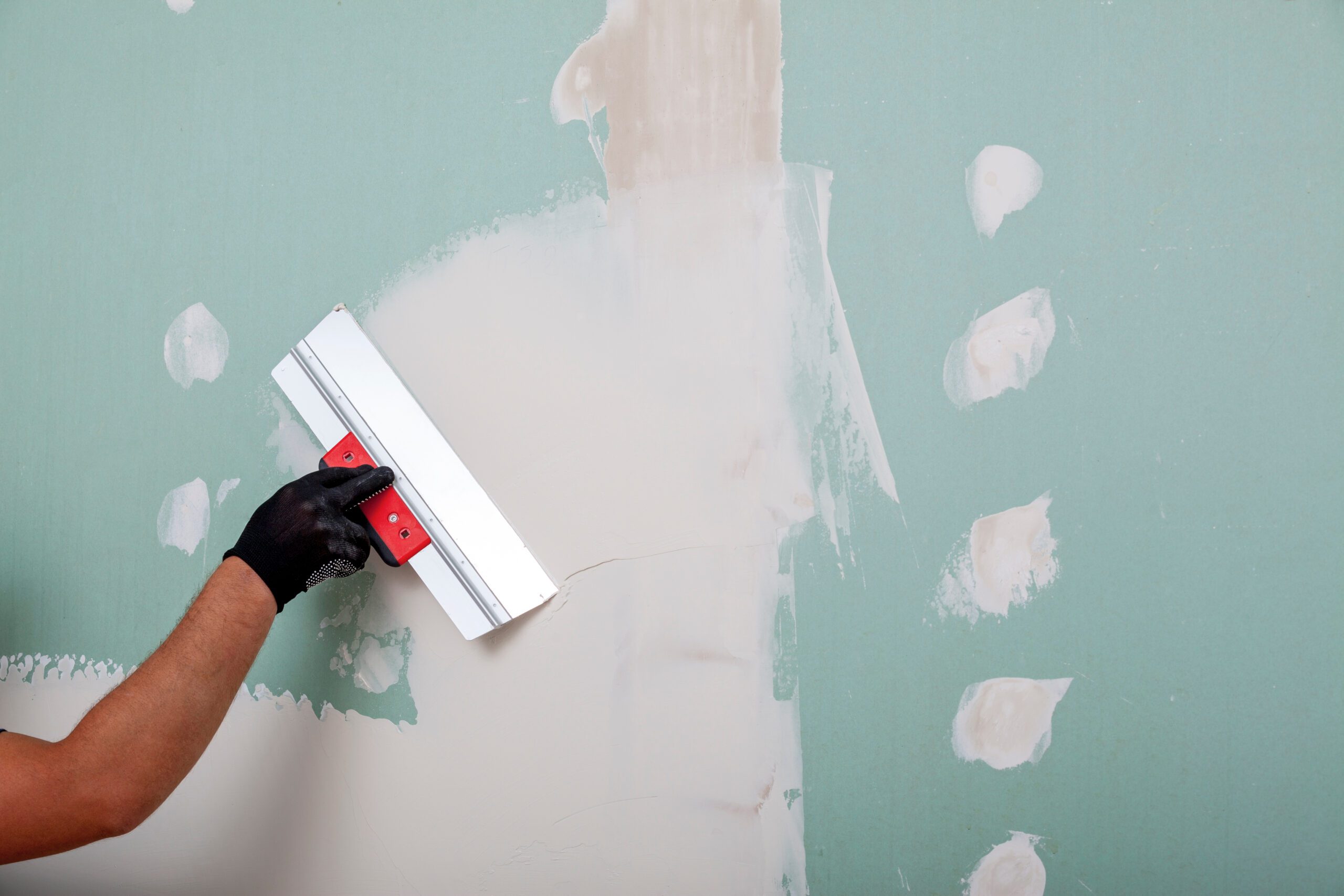Discover the very best Practices for Successful Drywall Repair Service and Installation
The art of drywall fixing and setup requires a mix of skill and accuracy. Mastering the vital devices is important for accomplishing a seamless coating. Comprehending the detailed process can make a considerable difference in the last result. Appropriate techniques for mudding and taping are likewise essential. What continues to be is the knowledge of maintenance that ensures durability. These components together create a polished end result worth checking out additionally.

Crucial Devices for Drywall Repair and Installment
When taking on drywall fixing and installment, having the right devices can greatly enhance the efficiency and high quality of the work. An energy blade is necessary for cutting drywall sheets specifically, while a drywall saw can assist in making a lot more intricate cuts. Taping knives, offered in various dimensions, are vital for applying joint substance efficiently and equally. A drywall sander, ideally with a dirt collection feature, helps accomplish a sleek finish, decreasing the demand for extensive cleaning.
In addition, a measuring tape assurances exact dimensions, and a level makes certain that setups are straight and plumb. Safety and security gear, consisting of dust masks and safety glasses, ought to not be overlooked to secure against particles and dust. Finally, a stud finder help in locating framing participants, ensuring secure installment. By outfitting oneself with these important devices, the repair service and setup process becomes a lot more convenient and causes a professional-quality result.

Step-by-Step Guide to Patching Holes
Patching holes in drywall requires an organized strategy to assure a smooth fixing. The area around the opening have to be cleaned and any kind of loose particles eliminated. For little holes, a putty blade can be utilized to apply a light-weight spackle, pressing it right into the hole and smoothing the surface area. After it dries, fining sand is necessary to create a level surface. For larger openings, a patch of drywall may be essential. This includes reducing a piece of drywall slightly bigger than the hole, safeguarding it to the wall with screws, and making use of joint compound to cover the joints. When the substance dries out, it ought to be fined sand smooth. Ultimately, keying the patched location before painting will certainly assure an even surface. Complying with these actions will lead to a professional-looking repair that blends effortlessly with the surrounding wall surface.
Strategies for Seamless Drywall Installment
Accomplishing smooth drywall setup demands mindful planning and implementation. First, it is important to reduce and measure drywall sheets properly to decrease spaces. Using an utility knife, installers should score the board prior to breaking it along the cut line, ensuring clean edges. Properly aligning the sheets is important; beginning with the top and working down helps maintain uniformity.
Fastening drywall to the studs requires consistent spacing, normally every 16 inches, making use of screws instead of nails for far better hold. This strategy lowers the threat of stands out in time. Furthermore, surprising the seams between sheets enhances structural stability and lowers the presence of joints.
Using the appropriate density of drywall for specific areas-- such as moisture-resistant types in bathrooms-- more contributes to a remarkable surface. Adhering to these techniques will lead to a professional-looking and smooth installation, setting the phase for the subsequent ending up processes.
Ending Up Touches: Insulation and Mudding
Finishing touches, such as mudding and taping, play a vital function in achieving a sleek drywall surface. Taping involves applying a thin strip of drywall tape over the joints and joints, ensuring a seamless look. This procedure assists protect against fractures and creates a solid bond in between drywall sheets. It is essential to choose the best type of tape, with paper and fiberglass harmonize being one of the most usual options.
Mudding, or applying joint compound, complies with insulation. This substance fills in spaces and smooths out the surface area for an uniform finish. It is commonly applied in numerous layers, with each layer requiring to completely dry prior to sanding. Correct technique involves feathering the edges to blend the substance into the bordering drywall, lessening visibility.
When finished properly, taping and mudding improve both the structural and aesthetic integrity of the drywall setup, leading to a professional-quality surface.
Tips for Keeping Your Drywall After Installment

Additionally, keeping a consistent indoor moisture level can protect against warping or mold and mildew development. Utilizing a dehumidifier in wet locations, like basements, is advisable. It's additionally useful to periodically paint areas that reveal wear, as this secures the underlying product. Lastly, when relocating furniture or installing components, care must be worked out to avoid damaging the drywall. By following these maintenance suggestions, home owners can prolong the life of their drywall, securing it continues to be an appealing attribute of their interiors.
Often Asked Inquiries
What Safety Equipment Is Essential for Drywall Repair Service and Installation?
For drywall repair work and setup, necessary safety and look these up security equipment consists of safety goggles to protect eyes, dust masks to avoid breathing of fragments, handwear covers for hand defense, and knee pads for convenience throughout long term kneeling. drywall contractors.
Just how Do I Determine the Drywall Thickness Needed for My Project?
To determine the drywall thickness required for a task, one need to think about the wall surface's structural demands, local building ordinance, and the intended here are the findings use the room, commonly choosing 1/2-inch or 5/8-inch drywall.
Can I Fix Drywall Without Removing Furnishings From the Space?
Yes, drywall can be repaired without removing furniture from the area. Mindful planning and safety measures can reduce mess, enabling efficient repair work while keeping surrounding things risk-free from dust and damages during the process.
What Kinds of Drywall Are Best for Different Atmospheres?
Moisture-resistant drywall is suitable for shower rooms and kitchen areas, while soundproof drywall suits shared walls in homes. Fire-rated drywall is best for garages, and standard drywall functions well in basic living areas, guaranteeing sturdiness and suitability for various settings.
The length of time Does It Take for Drywall Mud to Dry Entirely?
Drywall mud usually takes weblink 24 to 48 hours to completely dry totally, depending on elements like moisture and temperature level (Interior Painting). Thicker applications might call for longer drying out times, while thinner layers can dry much more quickly. Correct ventilation help drying
The art of drywall fixing and setup requires a blend of ability and accuracy. When taking on drywall repair work and installment, having the right devices can significantly improve the efficiency and high quality of the job. An utility blade is important for reducing drywall sheets exactly, while a drywall saw can aid in making more complex cuts. Attaining seamless drywall setup needs careful planning and implementation. Moisture-resistant drywall is perfect for washrooms and cooking areas, while soundproof drywall matches shared walls in houses.